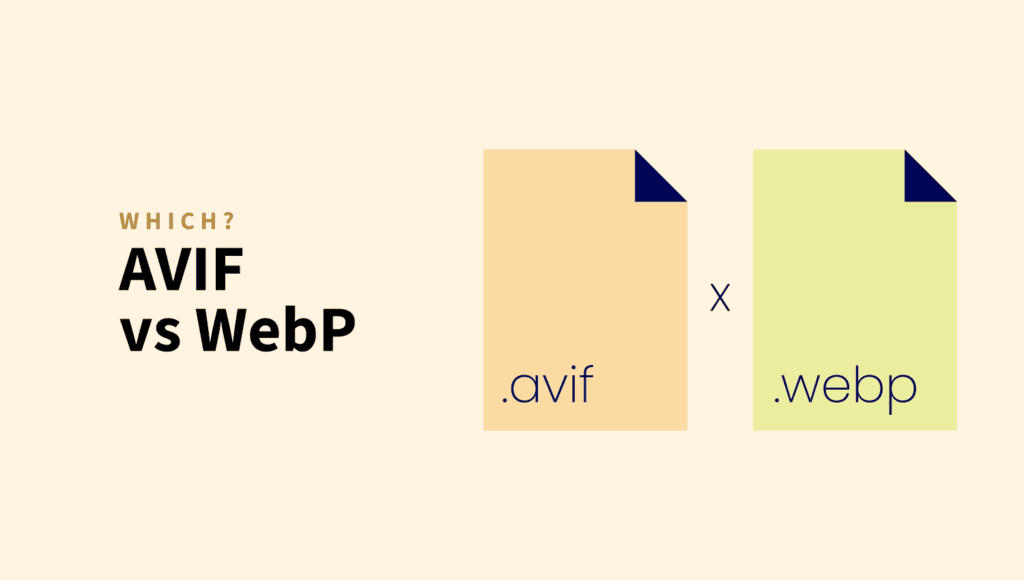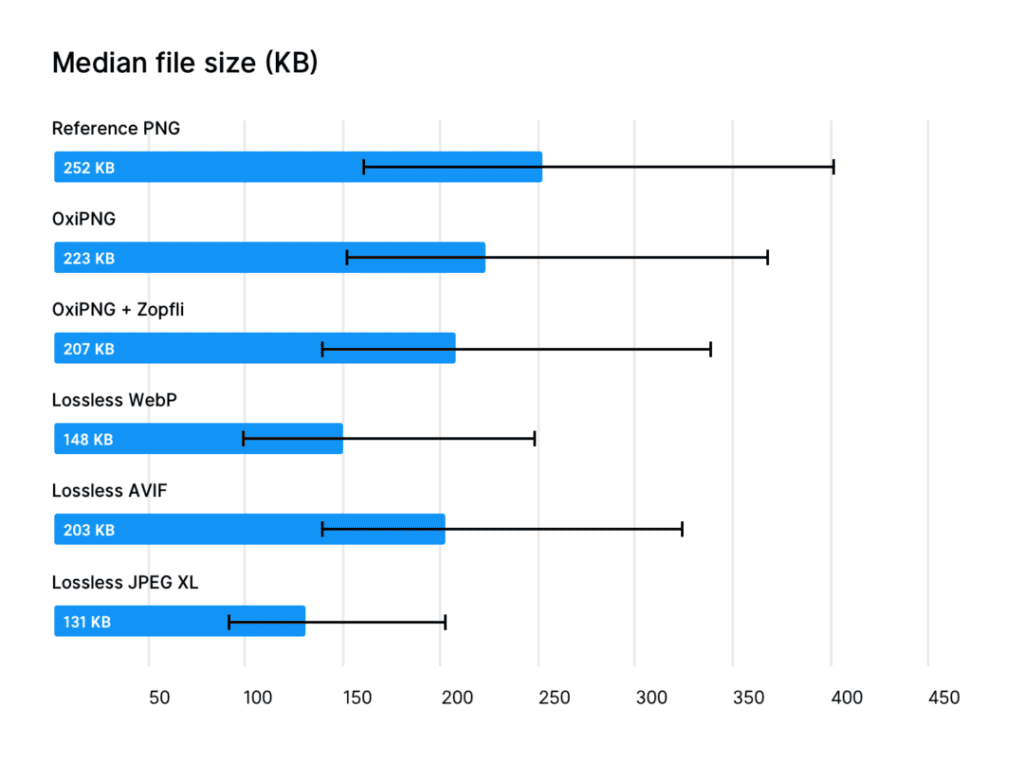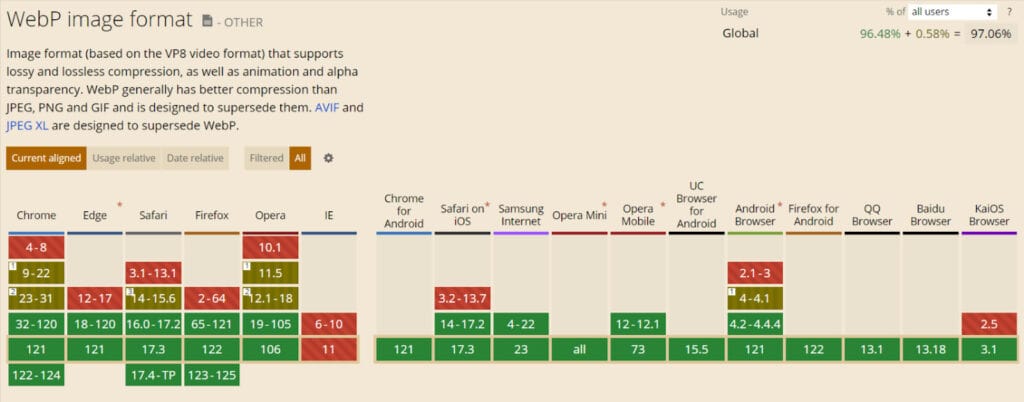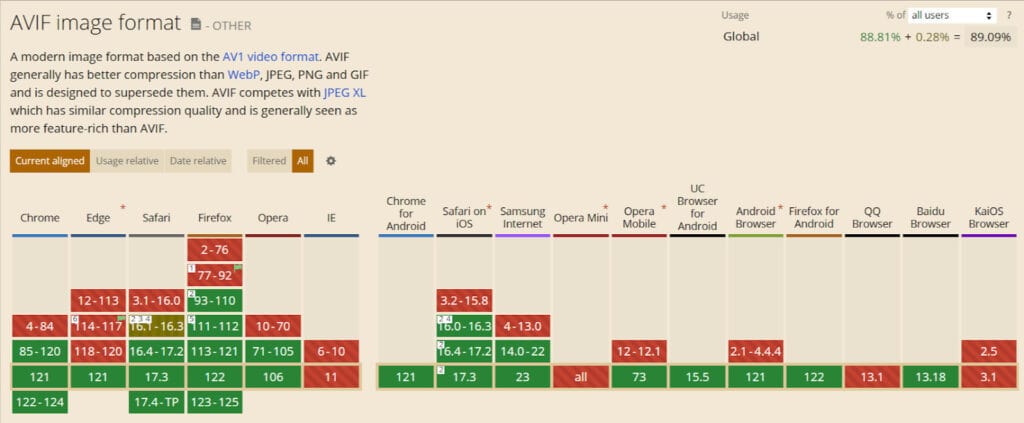AVIF vs WebP: Which Modern Image Format Is Better?

Let’s talk about a comparison between two excellent image types: AVIF vs WebP.
The folks at the Alliance for Open Media made AVIF. It’s super good at squishing pictures down, so they take up less space. Google made WebP for the same reason. Both are about making images smaller without losing the good looks.
Open Media Alliance created AVIF with the quality of compressing pictures to save space. For the same reason, Google created WebP. Both reduce images without losing quality.
WebP has been around a bit longer. It’s pretty good at making images smaller too.
The best part?
Almost every web browser knows how to show WebP images. This makes it a go-to for making websites load fast.
So, which should you go with?
Rather than debating the issue, let’s look at the article AVIF vs WebP, which answers all of your questions about these two modern image formats.
Quick Takeaways
- Both AVIF and WebP are modern image formats designed to reduce file sizes while maintaining quality.
- AVIF is newer and offers more efficient compression, often resulting in smaller file sizes than WebP.
- WebP has been around longer and is widely supported across all major browsers, making it the go-to for fast website loading.
- Choosing between AVIF and WebP depends on your need for compression efficiency, image quality, and browser support.
What Is the AVIF Image Format?
What is an AVIF file? It’s an advanced image format introduced in 2019 by the Alliance for Open Media, designed as the image counterpart to the AV1 video codec.
When it comes to AVIF vs JPEG, AVIF has higher compression efficiency, with file sizes 50% smaller than JPEG and 20-30% smaller than WebP.
AVIF supports both lossy and lossless compression, transparency, animation, color profiles, and HDR. AVIF can also handle 10- and 12-bit colors at full resolution.
AVIF encodes images using AV1’s inter- and intra-frame coding. AV1 divides the image into small blocks and uses transformations and predictive coding techniques to reduce redundancy within and between frames.
It also uses variable block sizes to compress images. AVIF compresses encoded images further with entropy coding methods like context-adaptive binary arithmetic coding (CABAC).
It’s royalty-free and open source so that anyone can use the AVIF format without permission.
Pros and Cons of Using AVIF Images
AVIF image format has numerous advantages over older and modern WebP image formats. Nevertheless, there are a few minor drawbacks as well.
Let’s look into the pros and cons of using AVIF images:
Pros
- AVIF offers better compression than JPEG, PNG, and WebP, resulting in smaller file sizes without sacrificing quality.
- Provides higher image quality in complex visual scenarios.
- It supports a wide color gamut for accurate, vibrant color reproduction. Effective for high-quality images.
- Supports transparency for both lossy and lossless compression.
- Adaptive and responsive, it supports various resolutions and quality levels.
Cons
- Limited browser support.
- Requires extensive computing power for encoding and decoding images.
- Popular image editing software still doesn’t support AVIF natively.
- Needs adjustment in workflows and tools to transform to AVIF.
What Is the WebP Image Format?
Google created the modern image format known as WebP with the goal of correcting traditional image format flaws and eventually replacing them.
WebP enables websites to display high-quality images while maintaining page loading speed. Likewise, it supports 8-bit color, as well as transparency, animation, and color profiles.
It offers a more efficient compression rate than JPEG and PNG. WebP lossless images are 26% smaller than PNG. Lossy WebP images have a 26-30% smaller file size than JPEGs.
WebP uses the V8 codec’s compression technology and predictive encoding to encode images. It groups pixel values based on blocks next to them and then only encodes the difference.
WebP achieves lossless compression by precisely constructing new pixels from pre-existing images. But, if it can’t find an exciting match, it can use a local palette.
Pros and Cons of Using WebP Images
WebP provides numerous advantages over any traditional image format. However, like the dark side of the moon, WebP also has some disadvantages.
Here are the Pros and Cons of WebP:
Pros
- Smaller image file size ensures fast loading speed, resulting in an improved user experience.
- Compatible with all major browsers, including Google Chrome, Mozilla Firefox, Microsoft Edge, Apple Safari, Opera, etc.
- Saves bandwidth and device resources, which are helpful for mobile devices.
- Supports lossy RGB transparency, which makes it stand out from other image formats.
- All major photo editing software supports WebP.
Cons
- Explicitly designed for internet use, so it’s not ideal for offline use.
- Limited to 8-bit color support.
- Doesn’t support progressive encoding, making rendering inefficient.
- Can degrade image quality in some cases.
AVIF Vs WebP: 9 Key Differences
1. Which has Faster Website Load Time
Speed matters, whether it is a race or a website! Website loading speed has a direct impact on the website’s overall performance.
What impacts website loading speed the most?
Images!
Images contain almost two-thirds of a web page. Thus, the image file size determines the website loading speed.
When it comes to image file size, the file size of AVIF format is smaller than that of WebP. AVIF provides a 20%-30% smaller file size than WebP.


Image 1: [AVIF: 169KB] VS Image 2: [WebP: 453KB]
Image compression efficiency ensures its file size. WebP uses V8 compression technology. On the other hand, AVIF uses AV1 compression technology, which is more advanced and efficient than WebP. Therefore, the AVIF provides a smaller file size than WebP.


Image 3: [AVIF compressed: 78.6KB] VS Image 4: [WebP compressed: 198KB]
As the AVIF file size is significantly smaller than that of WebP, AVIF has a faster website loading time than WebP.
2. Better for Compression
One of the most important factors to consider when choosing between WebP vs AVIF is image compression quality. Image compression determines image file size — higher compression efficiency results in smaller image file sizes.
Smaller image files improve page loading speed and reduce Large Contentful Paint (LCP). This enhances user experience and SERP ranking.
WebP is better than AVIF file format when it comes to lossless compression. It is excellent for images that don’t have text on them.

When comparing AVIF to WebP, AVIF provides superior lossy compression for photos and text images, with a 10% improvement across the compression range.

Unfortunately, WebP lossy compression can cause problems like blockiness, blurring, and color banding.
Unlike lossy WebP, lossy AVIF has no negative effects. Thus, AVIF is the better option for graphic and text-based images.
3. Which Formats Suits Best for Social Media Use
Over 62.3% of the world’s population uses social media. To get the most out of your social media platforms, you must increase post engagement.
How?
Images! Images help to drive more engagement than posts without images. X (formerly Tweeter) with images generates an impressive 18% higher click-through rates than text-only tweets.
It becomes better for high-quality images. That’s why sharing high-quality images on social media platforms generates more impressions and engagement.
AVIF and WebP both generate high-quality images while taking less storage.
However, AVIF’s compression algorithm is more efficient than WebP. Thus, AVIF produces smaller-sized images than WebP, resulting in faster loading on social media platforms.
WebP has better browser support than AVIF. As a result, social media platforms support and prefer WebP. Similarly, despite being competitors, both X and Meta prefer the WebP format for images.
4. Which One Takes Less Space
Image file size is a crucial consideration when it comes to choosing between WebP and AVIF. It determines how much space the image will occupy on your device and server. The smaller the file size, the less space it will occupy.
AVIF provides more efficient compression technology than WebP, resulting in smaller file sizes. However, for uncompressed images, WebP outperforms in terms of file size. Uncompressed WebP images are 1.75 times smaller than AVIF images.

When it comes to compressed images, AVIF typically outperforms WebP. AVIF also performs better in lossy compression.
Likewise, lossy AVIF images and text photos are 10% smaller than WebP. On the other hand, lossless WebP images perform better than AVIF.
Besides, uncompressed WebP images take up less space than AVIF. Except for lossless compression, compressed AVIF images require less storage space than WebP.
5. Which File Transfers Fast
We transfer tons of files every day, and image files have a large share in that aspect. The size and type of image files have an impact on file transfer speed.
AVIF comes with a more advanced compression algorithm than WebP. Therefore, AVIF compresses images more efficiently than WebP, resulting in a smaller file size. As a result, AVIF file transfers are faster than those of WebP.
AVIF handles image content more efficiently, with incredibly complex textures, gradients, and transparency, leading to faster transfer speed.
Moreover, image encoding and decoding speeds impact file transfer speed. WebP has better encoding and decoding speed than AVIF, resulting in faster transfer speed.

Source: https://siipo.la
Browser and device optimization also impact file transfer speed. As AVIF is a new format, it lacks in terms of browsers and devices optimized for it. So, WebP has an edge over AVIF in terms of file transfer speed.
AVIF lags behind WebP in terms of encoding and decoding speed and optimization, but these are minor considerations. As a result, the AVIF image file loads faster than WebP.
6. Image Transparency
WebP and AVIF both support alpha channel transparency, allowing you to optimize images with different opacity levels.
WebP supports alpha channel transparency for 8-bit images, while AVIF supports alpha channel transparency for 10-bit and 12-bit images.
Therefore, AVIF’s alpha channel transparency is more efficient than WebP.
AVIF supports transparency for lossless images but doesn’t support transparency for lossy images. On the other hand, WebP is the only image format that supports RGB channel transparency for lossy images.
If you need to choose an image format for a transparent image, use WebP for lossy compression and AVIF for lossless compression.
7. Digital photos vs. Web Graphics
Some image formats are better for digital photos, while others are better for web graphics. That’s why digital images and web graphics matter when choosing WebP or AVIF formats.
AVIF provides a more efficient compression algorithm than WebP. Thus, AVIF images are smaller in size, making them ideal for managing large collections of digital photos. AVIF can keep an image library streamlined by making good use of storage space.
WebP offers only 8-bit colors, but AVIF offers all 8-bit, 10-bit, and 12-bit colors. Therefore, AVIF produces sharp images and accurate colors. It also accurately produces image details.
AVIF is designed for web and offline uses. On the other hand, WebP was intended for web users. So, AVIF is the ideal choice for digital photos, and WebP is the perfect choice for web graphics.
8. AVIF vs WebP for Editing
Some image formats lose quality after each edit and save. On the other hand, some image formats retain their original image quality no matter how many times they are edited and saved.
So what about AVIF and WebP?
WebP allows both lossless and lossy compression. If you edit a lossless WebP image, the quality remains unchanged. However, editing a lossy WebP image will result in a loss of quality.
The AVIF format also supports both lossless and lossy compression. When you edit a lossless AVIF image, the quality remains unchanged. This is not true for lossy AVIF images, which will degrade in quality after editing.
Another essential factor to consider when selecting the appropriate image format for editing is image editing tool compatibility. Every popular photo editing software natively supports WebP. However, not all popular photo editing software supports AVIF.
WebP was explicitly designed for web use. In contrast, AVIF was intended to be used both online and offline. Thus, AVIF favors editing.
9. Browser Support
The best practice is to choose an image format that is supported by the majority of web browsers.
Suppose your image format doesn’t support the most popular browsers. In that case, users will be unable to view images on the site, and a poor user experience will be detrimental to your website and business.
WebP has been on the scene for a long time. Now, all major browsers fully support WebP natively. Currently, 97.06% of web browsers support WebP fully, according to Can I use.

On the other hand, AVIF is a new format. Thus, it doesn’t have the support of all major browsers. However, the situation has already changed and is changing day by day. Now, 89.09% of web browsers fully support AVIF natively according to Can I Use.

Previously, there was a significant gap in AVIF vs WebP in terms of browser support. But the situation has changed, and AVIF has reduced the gap.
AVIF or WebP: Which Image Format Should You Choose?
When Should you use AVIF Image formats?
- Great for high-quality images like photos, delivering accurate colors and finer details
- Images with large areas of uniform color
- Images with overlays
- Digital art and graphic design
When Should you use WebP Image formats?
- WebP is great for versatile web graphics, including photographs, illustrations, logos, and animations
- Image with transparency in lossy compression
- Website speed optimization
- Images in lossless compression.
The answer actually depends on what you require.
AVIF is the place to go for high-quality photos with lots of colors and details. WebP, on the other hand, has you covered for quick web loads and reasonably good images.
The key is to choose the right image format for your job.
FAQs
What is better, WebP or AVIF?
WebP is more widely supported and offers great compression, while AVIF tends to provide even better quality at smaller file sizes, but it’s not as widely supported yet. If compatibility is key, go with WebP, but if you’re looking for top-notch quality and smaller files, AVIF might be worth considering.
Does WebP reduce quality?
Yes, WebP can reduce quality, especially when using higher compression settings. However, it often maintains good image quality at smaller file sizes compared to other formats like JPEG. The key is finding the right balance between quality and file size for your needs.
Does AVIF work on all browsers?
No, AVIF doesn’t work on all browsers yet. It’s supported in major browsers like Chrome, Firefox, and Opera, but Safari and some older versions of other browsers may not support it. It’s still growing in adoption, so checking compatibility is a good idea before using it for all users.
What are the advantages of WebP over PNG?
WebP has a few advantages over PNG. It typically offers smaller file sizes while maintaining similar image quality, which is great for faster loading times and better performance. Additionally, WebP supports transparency like PNG but with more efficient compression, making it a more versatile and lightweight choice for web images.
Is AVIF lossy or lossless?
AVIF can be both lossy and lossless. Lossy compression reduces file size by discarding some image data, which can lead to slight quality loss but results in smaller files. Lossless compression, on the other hand, preserves all the image data, keeping the quality intact but with larger file sizes. This flexibility lets you choose based on whether you prioritize quality or file size.
What is the main disadvantage of WebP?
The main disadvantage of WebP is that it isn’t supported by all browsers, particularly older versions of Safari and Internet Explorer. While major browsers like Chrome and Firefox support it, users on unsupported browsers may not be able to view WebP images, which could affect compatibility across a wider audience.
Which image formats like WebP and AVIF often provide better compression than PNG or JPEG?
Formats like WebP and AVIF often provide better compression than PNG or JPEG because they use more advanced compression techniques. Both WebP and AVIF achieve smaller file sizes while maintaining similar or even better image quality compared to PNG and JPEG. AVIF, in particular, offers superior compression efficiency, especially for lossy compression, making it ideal for web use where reducing load times and bandwidth is a priority. WebP also outperforms PNG and JPEG in many cases, offering a good balance of file size and image quality.
Are AVIF images smaller than JPEG?
Yes, when it comes to AVIF to JPEG ratio, AVIF files are much smaller than JPEG files due to their advanced compression technology.